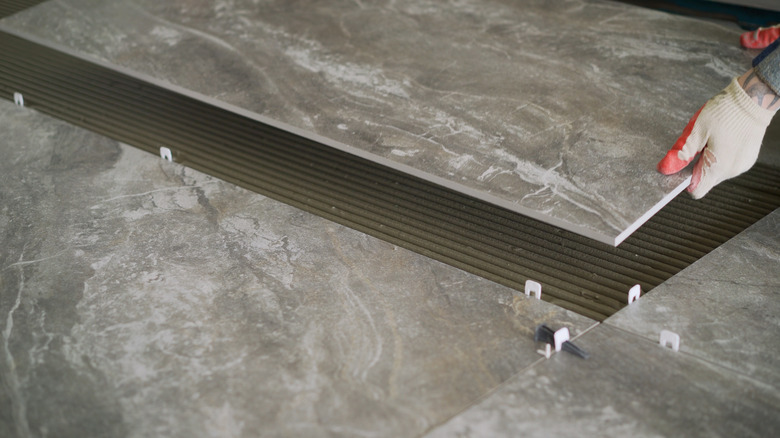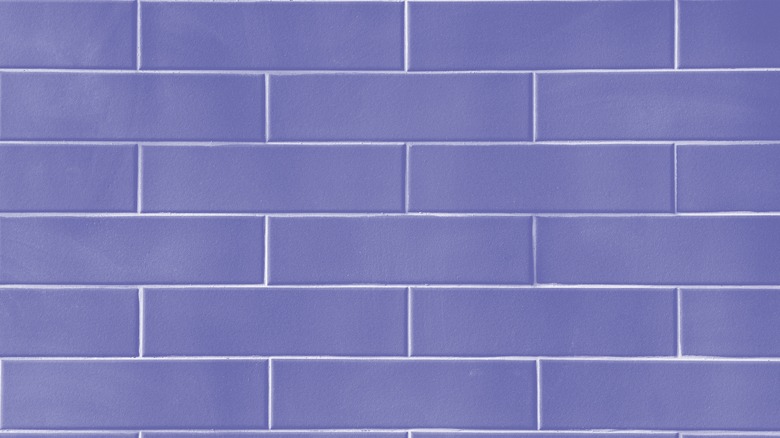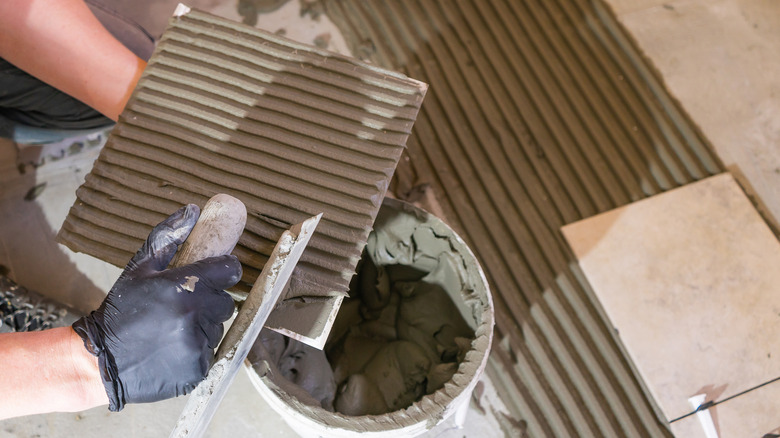Should You Install New Tile On Top Of Existing Tile?
The definitive answer? Perhaps. When done correctly, installing new tile on top of the old one can be a money-saving, energy-efficient, and time-conserving way to repair, upgrade, and update your floors or walls. Avoiding the expense and tumult of demolishing and removing the original tiles is an intriguing thought. However, a faulty reinstallation job is another matter. The last thing you want is for the replacement to look as though a rank amateur did it, or worse yet, in need of a re-do. Being initially frugal may be more costly in the end, and Nerang Tiles warns that you may be risking just a short-term fix.
On the other hand, given the proper conditions and applying the correct techniques, tiling over existing tiles can be a good option and one that appeals to your thrifty side. Whether working with ceramic, vinyl, or linoleum flooring, you'll be good to go if your surface and existing tiles meet certain standards.
A successful re-do depends on the state of the original floor and tiles, according to DIY Doctor, and you must re-tile on a stable, solid, level, and sturdy base. You must also consider the additional weight and height of a double layer, and you might possibly have to compensate for it with additional work. Ripping up old tiles and replacing them on the exposed surface may be the optimum course of action, per Tile Club. But don't rule out skipping that step and tiling atop tile.
How to do it
An in-depth review of your floor and existing tiles is essential to determine if you should install on top of them or not. Inspect current tiles for cracks, identify crumbled grout, and look for indications of sitting water. Loose tiles make for an inadequate surface and may be a harbinger of future problems unless you re-tile from scratch. Test if tiles are tight by tapping in multiple places and listening for inconsistent sounds.
Assess the floor's smoothness using a level. Insignificant floor rises can be sanded or flattened with a grinding tool. Using 80- to 100-grit sandpaper on the old tile will scratch the surface and aid the replacement tiles in sticking to it. Instead, use a sander to level off the grout and scrape those joints between the tiles. Doing so may eliminate the mold spores which thrive in it. Finally, be on the lookout for grout imperfections that may be caused by shifting tiles, per The Journal of Light Construction.
Installing over an old vinyl or linoleum flooring may not be as suitable as redoing a ceramic one. An unstable vinyl surface may have tiles that have buckled or curled. Some may also be torn. Furthermore, the tiles may contain asbestos which needs to have a professional abatement or be left undisturbed, according to BuildDirect. Cushioned vinyl or linoleum tiles may also contribute to a surface that is less than solid.
Install like a pro
Rubi Blog emphasizes the importance of checking old tiles for moisture, mildew, and mold lurking in the grout. If there is trapped water, your substitute tiles may also be affected. Layering tile on tile creates a situation that can make reinstallation more problematic but not impossible. When re-tiling a bathroom this way, fixtures may have to be removed and reinstalled or even replaced. There may no longer be enough clearance for doors to open and shut, so their undersides might need to be shaved down. Changes may have to be made to account for the additional weight of two layers of tile, but no such worries if the underlying floor is concrete.
Whether a pro does the deed or it's a do-it-yourself project, there are necessary tools and other materials that will come into play. First, adhesives are needed, and Nerang Tiles suggests that the flexibility of a rubber-based one will accommodate slightly shifting tiles. Adding a bit of sand to an adhesive may improve its sticking power. You will also need some mortar and a trowel to fill in any gaps between layers.
A thin coating might be used to prep the floor before tiling, and you can also apply a substance to seal hairline cracks. Finally, a mask and goggles are recommended to protect against hazardous dust when working with ceramic tiles.


